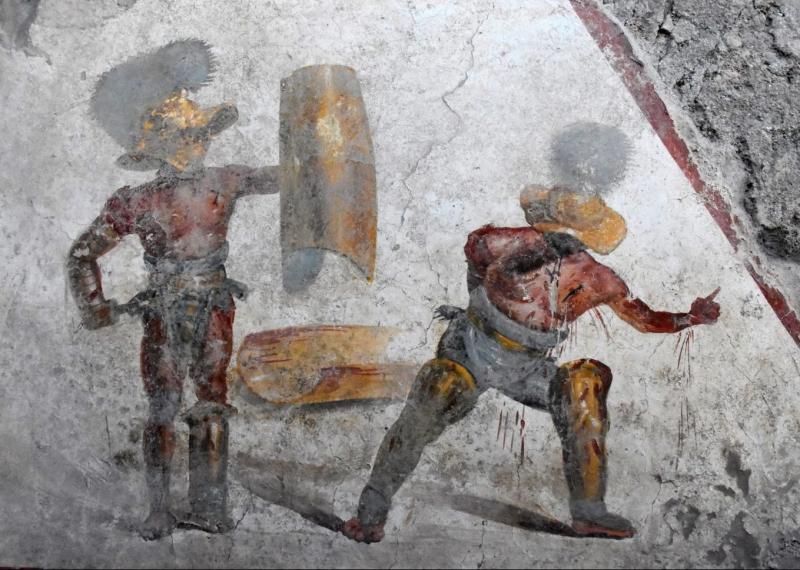A remarkable gladiators fresco came to light during the ongoing excavations of the Great Pompeii Project, a European Union-funded archeological project meant to secure and restore the famous archeological site.
Buried for 2,000 years, since Mount Vesuvius’ eruption in 79 AD destroyed the ancient Roman city of Pompeii, the fresco depicts two gladiators at the end of a fight, one winning, the other surrendering.
The gladiators depicted are respectively a ‘mirmillone’ and a ‘trace,’ two types of fighters distinguished by different armor, and classic opponents in gladiator struggles.
The gladiator on the left, the mirmillone, showing a victorious stance, is wearing a wide-brimmed helmet and holds a weapon, the gladium, or short sword, and a large rectangular shield, the scutum. The one on the right, the trace, kneeling, has his shield on the ground, and is also wearing a wide-brimmed helmet.
The fresco, measuring 1.12 meters x 1.5 meters, was found at the intersection of the Alley of Balconies with the alley of Silver Wedding, in the construction area of Regio V. It is thought to have been located in a basement.
The superintendent of the Archeological Park of Pompeii, Massimo Osanna, said the place where the fresco was found was likely a tavern, or even a ‘dive’, with an upper floor possibly destined for prostitutes, as this was a place frequented by gladiators, pointing out that the Regio V is near the gladiators’ barracks, and is in fact the area with the largest number of inscriptions and graffiti referring to the world of gladiators.
Describing the fresco, Osanna points out the impressive realistic representation of the wounds, such as the ones on the wrist and chest of the losing gladiator, with blood spilling.
Osanna also says that we cannot infer the outcome of the fight. The wounded gladiator makes a gesture with his hand, perhaps to implore salvation. He could die or be graced.
“Just until a few years ago, the archaeological site of Pompeii was known worldwide for its negative image: collapses, strikes, lines of tourists in the scorching sun,” said Italy’s Culture and Tourism minister Dario Franceschini. “Today, it’s a redemption story. It’s now a welcoming site, and above all, a site where research and excavations are carried out. The discovery of this fresco shows that Pompeii is a treasure trove of research and knowledge for the archaeologists of today and tomorrow.”












